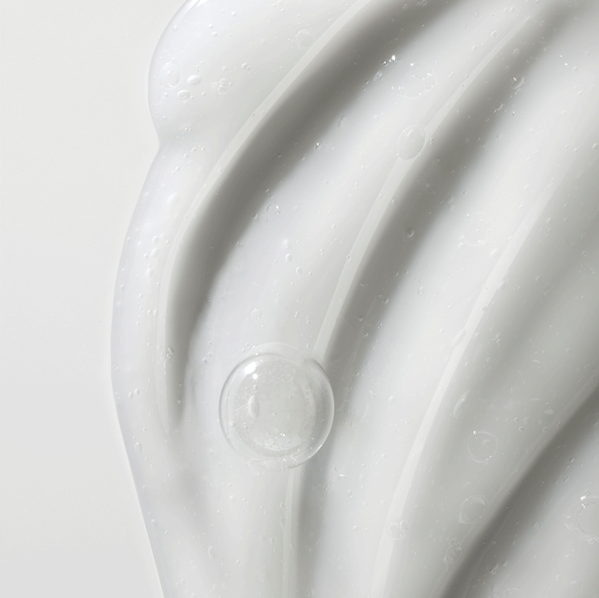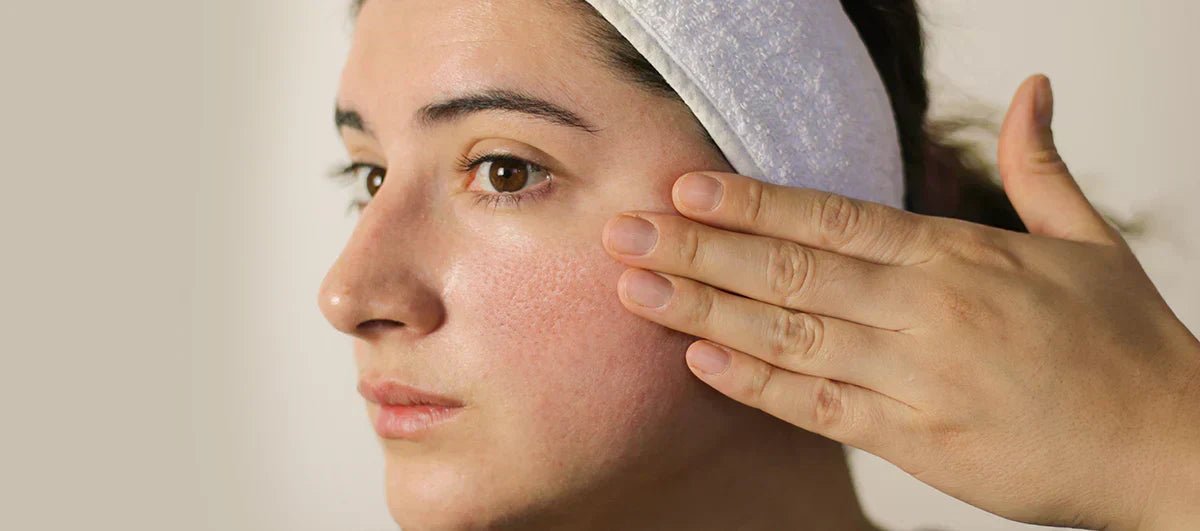We’ve all been there: leaning in close to the mirror, noticing those pesky little dots that seem to be getting bigger every day. While pore size is largely determined by genetics, it’s not an unchangeable fate. With the right knowledge and a strategic approach, you can significantly improve the appearance of large pores and achieve a smoother, more refined complexion.
As a generation that’s grown up with more information at our fingertips than ever before, we know the difference between marketing hype and real results. So, let’s cut to the chase and dive into the science-backed solutions for tackling large pores. This isn’t about instant fixes; it’s about a smarter, more sustainable approach to skincare.
What Causes Large Pores?

Before we can treat them, we need to understand them. Pores are simply the openings of hair follicles on our skin, each containing a sebaceous gland that produces oil. Several factors have an effect on their size. Some are inevitable, like genetics, your age and what your hormones are doing. The good news is that many of the causes of large pores, such as sun damage, dehydration and inadequate cleansing routines, are things you can control.
Let’s break it down.
Genetics
This is the big one. If your parents have larger pores, chances are you will too. Indeed, research suggests 60%-80% of all facial characteristics can be explained by genetics. For example, people with naturally oily skin tend to have larger pores because the excess sebum can stretch out the pore walls.
Aging
As we age, our skin loses collagen and elastin, the structural proteins that keep our skin firm. This loss of elasticity causes the skin around the pores to sag, making them appear larger.
Hormones
Hormones, especially androgens like testosterone, have a significant impact on pore size. Androgens increase sebum (oil) production, which can stretch pores and make them appear larger. While estrogen can improve skin’s firmness and make pores look smaller by boosting collagen, progesterone can increase oiliness, often leading to more visible pores before a period.
These hormonal fluctuations explain why pores might appear larger during puberty, before menstruation or during menopause, when estrogen levels drop and skin loses elasticity. Additionally, stress hormones like cortisol can also stimulate oil production, contributing to the appearance of larger pores.
Environmental factors
Unprotected sun exposure breaks down collagen and elastin at an accelerated rate, magnifying the effects of aging on pore size. Meanwhile, air pollution contains tiny particles (particulate matter) that can settle on the skin. When pores become clogged with a mix of dead skin cells, dirt and sebum, they stretch and become more noticeable.
Pollutants, along with other environmental irritants, can also trigger inflammation and oxidative stress in the skin, which can damage the skin’s barrier and contribute to an overall rougher texture, making pores seem more prominent.
Dehydration
When your skin is dehydrated, either from not drinking enough water or skipping your moisturizer, it can try to compensate by producing more or thicker sebum. This excess oil can easily clog pores, leading to the formation of blackheads and whiteheads and, over time, stretching the pores to make them appear larger. Staying hydrated, both internally and topically, is key to maintaining balanced skin and minimizing pore size. Read more about our Dermatologist-Approved Oily Skin Routine for Balanced, Clearer Skin.
Cleansing: Your Foundation for Pore Care

When it comes to large pores, proper cleansing is non-negotiable. The goal is to remove impurities and excess oil without stripping your skin.
A gentle, non-comedogenic cleanser is your best friend. Comedogens are substances that have a tendency to clog pores, which can lead to the formation of blemishes known as comedones. Look for ingredients that help to dissolve oil and debris, such as salicylic acid, which is a beta-hydroxy acid (BHA) that can penetrate deep into pores.
Avoid harsh, stripping cleansers that contain sulfates or alcohol. These can dry out your skin, causing your sebaceous glands to overcompensate and produce even more oil, a cycle you definitely want to avoid.
Double cleansing is also a game-changer, especially at night. Start with an oil-based cleanser or balm to break down makeup and SPF, followed by a water-based one to cleanse the skin thoroughly.
The Superstar Ingredients Dermatologists Swear By
When it comes to treating large pores, certain active ingredients have a proven track record. It’s really worth reading the ingredient list of the skincare products you buy, as some are powerful tools for refining skin texture.
Here are our four hero ingredients to look for:
-
Retinoids (including retinol): This is the gold standard. Retinoids work by increasing cell turnover, which prevents dead skin cells from building up and clogging pores. By promoting collagen production, they also improve your skin’s elasticity, which tightens the skin around pores and makes them appear smaller. Start with a low concentration of retinol a couple of times a week to let your skin build tolerance.
-
Niacinamide: Also known as vitamin B3, niacinamide is a true multitasker. It helps to regulate sebum production, which can reduce the oily appearance that often goes hand-in-hand with large pores. It also strengthens the skin barrier and improves elasticity, leading to a visible reduction in pore size over time.
-
Salicylic acid (BHA): As mentioned earlier, salicylic acid is a star for a reason. Because it’s oil-soluble, it can get deep into the pore lining to dissolve the sebum that causes clogs. Regular use of a BHA exfoliant can keep pores clear and less visible.
-
Clay: A clay mask can be an excellent weekly treatment for drawing out impurities and excess oil from the pores, leaving them looking smaller and less congested.
Pro Tips for Pumping Up Your Routine
Beyond the right products, a few expert-backed habits can make a significant difference.
-
Exfoliate Smartly: Over-exfoliation can damage your skin barrier. Instead of harsh scrubs, opt for chemical exfoliants containing AHAs (like glycolic or lactic acid) or BHAs. They gently dissolve the bonds holding dead skin cells together, revealing a smoother, brighter complexion. Use them a few times a week, not daily. Take a deep dive into exfoliation in Exfoliate, Exfoliate, Exfoliate: Your Secret To Glowing Skin.
-
Don’t Skip Your Moisturizer: It seems counterintuitive, but hydrating your skin is crucial. As stated earlier, when skin is dehydrated, it can produce more oil to compensate, making pores look bigger. Choose a lightweight, non-comedogenic moisturizer with ingredients like hyaluronic acid or glycerin to keep your skin plump and balanced.
-
Never Forget SPF: Sun damage is a major culprit for pore enlargement. A broad-spectrum sunscreen with an SPF of 30 or higher, applied daily, is the single most important preventative step you can take. It protects your collagen and elastin, preserving your skin’s structure and firmness.
Your Skincare Toolkit from Lighthouse
Building a routine for large pores shouldn’t involve buying a dozen new products; it’s about choosing the right ones. Look for formulations that feature the key ingredients we’ve discussed.
Cleansing
La Roche-Posay Toleriane Purifying Foaming Facial Wash is a gentle yet effective cleanser that removes impurities without over-drying, leaving skin balanced and comfortable.

Serums
A niacinamide serum is a great morning choice to regulate oil, while a retinol serum is a powerful nightly treatment to refine texture and boost collagen. Revision Skincare Retinol Complete 0.5 is a highly effective, time-released retinol serum that helps improve skin texture and tone with minimal irritation.

Moisturizers
La Roche-Posay Toleriane Double Repair Matte Moisturizer is a fantastic non-comedogenic option that provides hydration while controlling shine, which is perfect for skin with large pores.

Sun Protection
EltaMD UV Clear SPF 46 is a cult-favorite sunscreen that contains niacinamide to soothe and protect, making it a perfect daily SPF for those with large or acne-prone pores.

Your Path to Smooth Skin
At Lighthouse, we believe great skin starts with knowledge, and that includes understanding your skin’s unique needs. We’re here to help you build a consistent routine: gentle cleansing, targeted active ingredients and diligent sun protection. While you can’t erase your pores, you absolutely can make them appear smaller and less noticeable.
Need more insights? Take our skincare quiz and one of our board-certified dermatologists will review your answers for free and make recommendations from brands they trust.




